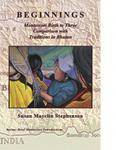
B232 Beginnings, Montessori Birth to Three Comparison with Traditions in Bhutan
$9.95
There is an old wives’ tale, versions in many cultures, that goes something like this:
A young girl was helping in the kitchen as her mother prepared a ham for a special meal. Before placing the ham in the baking pan, and then the oven, she cut off a rather large piece from the end.
“Why do you cut off the end?” the young girl asked.
“It is the way my mother always did it.”
So the girl went to the grandmother and asked the same question, and received the same answer, “It is the way my mother always did it.”
Then she went to the great-grandmother with her curiosity.
The great-grandmother laughed to herself when she realized that this practice had been passed down through two generations. Her reply to the great-granddaughter was,
“I cut the end of the ham because I didn’t have a pan large enough to hold the whole thing.”
As I have traveled the world learning about child raising practices, a path that began when I was a sophomore at university in 1963, I think of this story, because it is common that the many practices for caring for a child in the first three years of life follow the same logic, “People have been doing this for generations so it must be right.”
In this comparison of the Montessori birth-to-three practices with those of the tradition of Bhutan, as always I completely respect the culture and often benefit from traditional wisdom. In conversations with parents and grandparents around the world where I have explored these questions, it has been very satisfying to learn, together, just when the traditions are truly helpful, and when they might be an example of cutting off the end of the ham to fit the pan, or shaping the child to fit a pre-conceived plan. Montessori education is, and has always been, based on observation and continued learning. I hope you enjoy this little peek into just one example.
